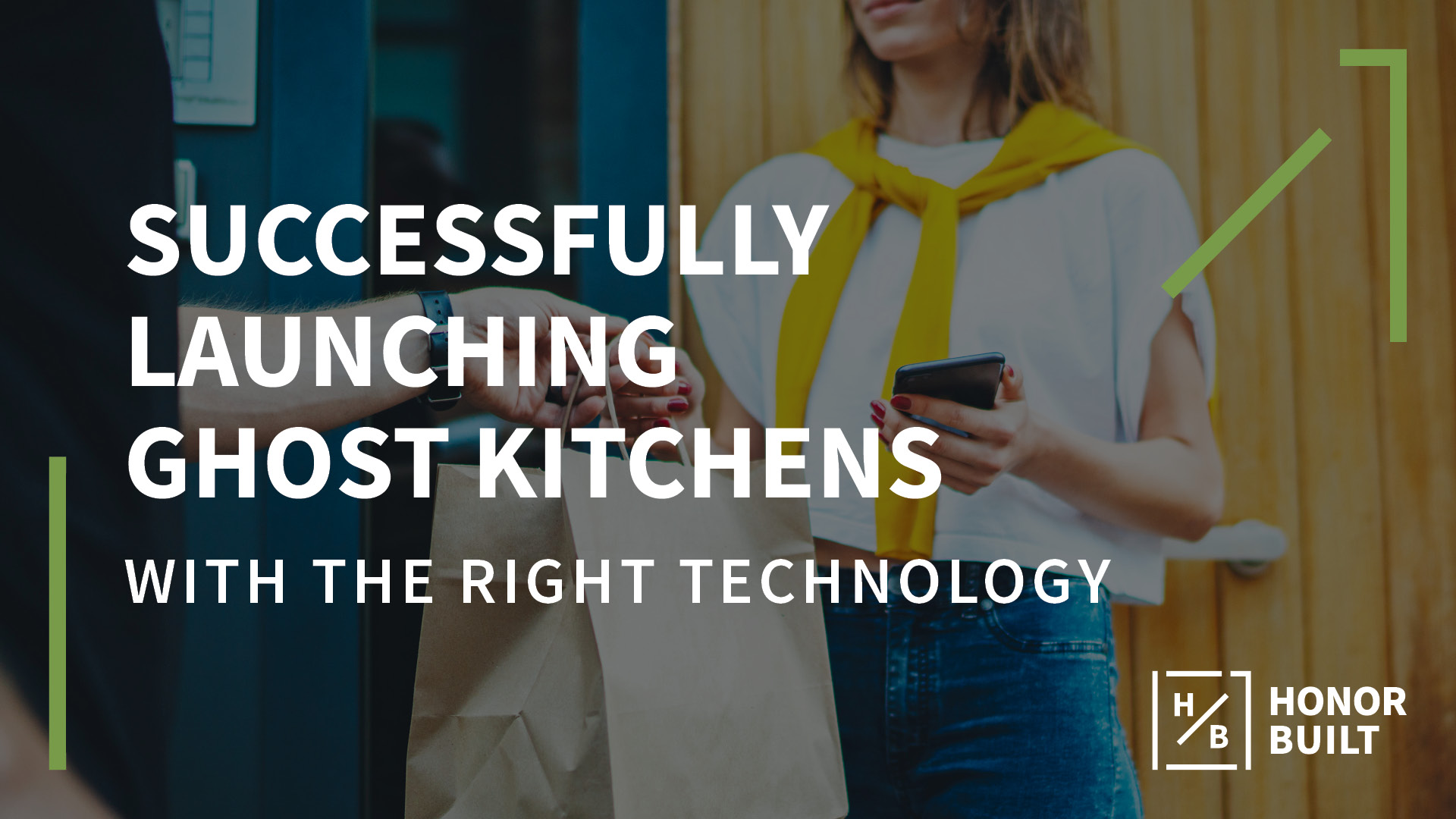Between the rise of third-party delivery apps and pandemic-induced dining restrictions, 2020 was a transformative year for food delivery. Ghost kitchens, sometimes referred to as dark kitchens, have emerged as a solution to meeting the dramatic rise in demand. These stripped-down spaces don’t have all the bells and whistles of a storefront or dining area. They only handle the basic functions needed to fulfill online delivery orders.
Why ghost kitchens are growing in popularity
Food delivery apps were already fueling increased demand for off-premise dining options before the pandemic. When shelter-in-place orders forced restaurants to stop indoor dining, food delivery apps became essential to keeping restaurant doors open. As a result, the demand for online delivery doubled in 2020. And even as we return to on-premise dining, you can expect many consumers to continue to enjoy the convenience and ease of online food delivery. The US food delivery market is forecasted to reach $76 billion by 2022.
Ghost kitchens provide a way for quick-service restaurants (QSRs) to share in that growth, expand their reach, and explore new business models:
- Support a single brand or multiple restaurants in one location (known as a shared kitchen).
- Enter new markets with lower overhead costs than a typical restaurant location.
- Fulfill a high volume of delivery orders without overwhelming locations that must also support on-premise dining and takeout.
- Launch virtual restaurants which are only available through online delivery and allow for experimentation without the costs of building a new brick-and-mortar establishment.
The possibilities of ghost kitchens are promising. To truly explore and leverage their benefits, they must be enabled with the right technology.
Technology enablement is critical to effective operations
Many ghost kitchens rely on third-party delivery apps like DoorDash, Postmates, and UberEats to engage with customers and deliver orders. Ghost kitchens need a solid technology infrastructure to ensure that every step of the order process, from placement to fulfillment, is seamless for customers, staff, and delivery drivers.
Shared kitchens are particularly complex to manage, as the stakes are much higher. Operators must manage multiple menus and organize orders and inventory in a way that’s easy for staff and delivery drivers to understand. Maintaining uptime is critical. If the system goes down in a shared kitchen, that means multiple systems are offline. Smooth operations depend on secure, reliable, integrated technology.
Start on the right foot with an experienced technology partner
Quick-service restaurants are already efficiency-focused, and ghost kitchens aim to fine-tune that efficiency even more. For customers, the process of ordering from a ghost kitchen should appear to be the same as ordering from a traditional location. Employees and delivery drivers need to be able to easily adopt new apps and processes to ensure orders are processed efficiently and accurately.
That means that the technology rollout has to be meticulous. Order errors and disjointed systems erode customer trust and frustrate employees. Launching a ghost kitchen already comes with plenty of process questions to address. An experienced technology deployment partner will minimize technology hurdles so you can focus on your customers, employees, and partners. Here’s how:
- Staging and testing technology before it’s brought onsite to ensure systems and devices communicate effectively and accurately.
- Standardizing technology across locations so operations are seamless for customers, employees, and delivery drivers.
- Implementing best practices learned from other ghost kitchen and quick-service restaurant technology deployments.
- Leveraging experience with a variety of technology solutions to deploy the best combination of tools for your space.
- Offering a single support phone number for all parties in the shared kitchen space, no matter the technology issue.
An experienced quick-service technology partner can also help you identify the technology that will best support your ghost kitchen’s needs.
Interested in setting up your ghost kitchen with the right technology?
There’s a lot to learn about how to maximize profits in ghost kitchens, but it’s clear that technology must be the foundation of an effective operation. With nationwide reach and decades of experience deploying technology in quick-service restaurants, HonorBuilt raises the bar on quality. All deployments are handled by our own in-house, full-time employees whose mission is to get the job done right the first time. To set up your ghost kitchen for success, get in touch with us today.

